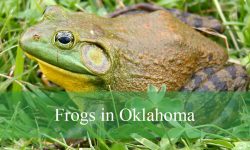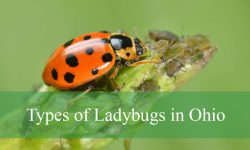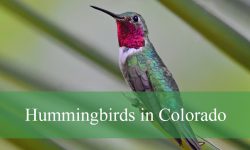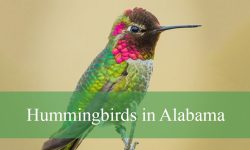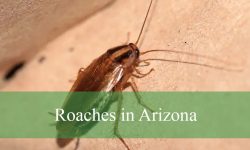Oregon’s gentle landscapes echo with the soft coos of doves throughout the year. These graceful birds, known for their calm nature and melodic calls, bring a peaceful rhythm to fields, forests, and suburban gardens across the state.
Each dove species has its own unique markings, flight style, and behavior. Some prefer open farmlands, while others thrive in woodlands or urban parks. Their adaptability allows them to live comfortably across Oregon’s diverse environments.
This guide highlights 7 types of doves found in Oregon, complete with identification tips, habitat insights, and beautiful pictures. Learning to recognize them adds a quiet joy to every birdwatching walk through the state’s tranquil scenery.
Common Types of Doves Found in Oregon
Mourning Dove (Zenaida macroura)
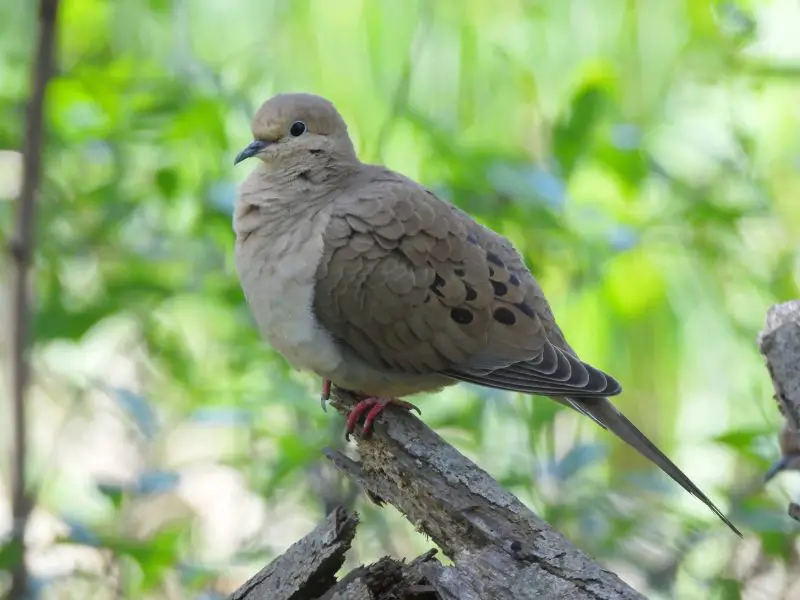
The Mourning Dove is the most abundant dove species in Oregon, easily recognizable by its soft, grayish-brown plumage, small head, and long, pointed tail with white edges. Adults typically measure around 9 to 13 inches in length with a wingspan of about 17 to 18 inches. Their large, dark eyes are surrounded by a delicate ring of blue skin, giving them a gentle appearance. When they take flight, their wings produce a distinctive whistling sound that helps identify them even from a distance.
Mourning Doves are primarily seed eaters and spend much of their time foraging on the ground. They feed on a wide variety of seeds, including grasses, grains, and weeds, often visiting backyard feeders stocked with millet, sunflower seeds, or cracked corn. They drink water by sucking it up in a continuous motion, a behavior uncommon among many bird species. In rural areas, they are frequently seen perched on power lines or foraging in harvested fields.
Their cooing call—a soft, mournful “coo-ah, coo, coo, coo”—is a familiar sound across Oregon during spring and summer. This gentle song is often mistaken for an owl’s hoot but carries a more musical tone. Mourning Doves are monogamous, forming pairs that often return to the same nesting area year after year.
In Oregon, Mourning Doves are widespread throughout the state, occupying grasslands, farmlands, desert edges, and even suburban neighborhoods. They are particularly common in the Willamette Valley and eastern plains, where open landscapes provide ideal feeding and nesting sites. Although some migrate south for winter, many remain in Oregon year-round, especially in areas with mild climates and ample food sources.
Eurasian Collared-Dove (Streptopelia decaocto)
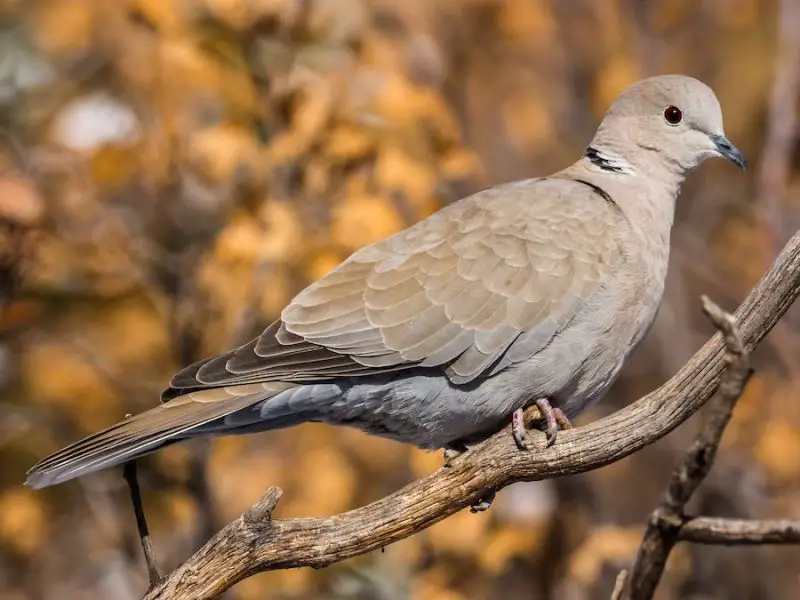
The Eurasian Collared-Dove is a pale, grayish-beige dove distinguished by a narrow black collar on the back of its neck, which gives the species its name. It measures about 12 inches in length with a wingspan reaching 18 inches, slightly larger than the Mourning Dove. The tail is squared off and edged with white, and its eyes are dark reddish-brown. Its plumage appears sleek and uniform, allowing it to blend seamlessly into urban and rural environments alike.
These doves feed primarily on seeds and grains, often foraging on the ground or visiting bird feeders in residential areas. They also consume fruits and occasionally small insects. Their adaptability has allowed them to thrive in both rural farmlands and urban landscapes. In Oregon, they are frequently observed near grain storage areas, barns, and agricultural fields where food is abundant.
Their call is distinct and easily recognizable—a rhythmic “coo-COO-coo” with an even tempo. Unlike the soft, mournful tone of the Mourning Dove, the Eurasian Collared-Dove’s song is more repetitive and deliberate. They are known for their tame nature and tolerance of human presence, often nesting on building ledges, in coniferous trees, or even in ornamental shrubs.
In Oregon, this non-native species first appeared in the early 2000s and quickly spread across the state. Today, it can be found in nearly every county, especially in the Willamette Valley, southern Oregon, and along the coast. Its ability to reproduce multiple times a year and thrive in human-altered landscapes has made it one of the most successful avian colonizers in recent history.
Rock Pigeon (Columba livia)
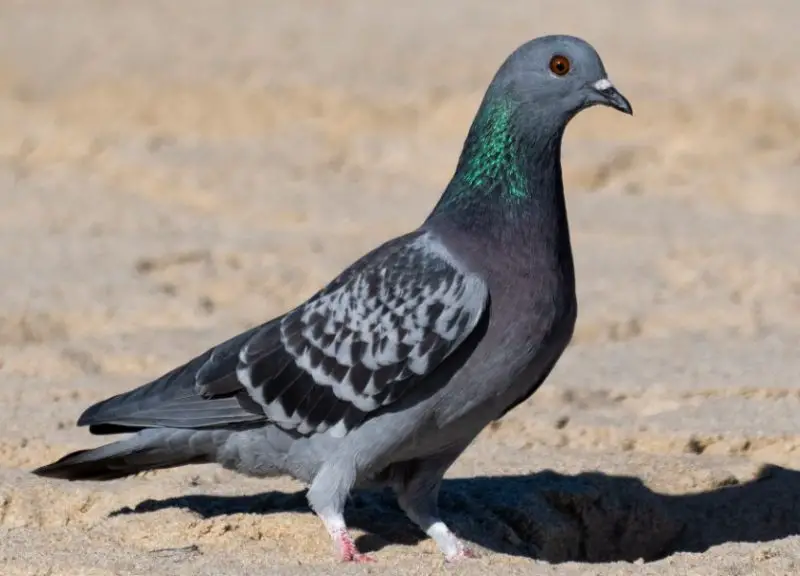
The Rock Pigeon, also known as the common city pigeon, is one of Oregon’s most familiar urban birds. Its coloration varies widely, but the classic form shows a bluish-gray body, two dark wing bars, and an iridescent sheen of green and purple on the neck. Some individuals display brown, white, or black variations. These sturdy birds measure about 12 to 14 inches long with a wingspan of 25 inches, making them slightly bulkier than most native doves.
Rock Pigeons are generalist feeders, thriving on seeds, grains, and discarded human food. They often gather in flocks in city parks, under bridges, or near grain elevators. Their powerful flight muscles and endurance allow them to cover long distances with strong, direct wingbeats. They also possess exceptional homing abilities, which have been utilized by humans for centuries in pigeon racing and message delivery.
Their cooing is deep and resonant, sounding like “coo-roo-coo-coo,” often heard during courtship or when guarding their nesting sites. These doves are social and usually seen in groups, roosting on building ledges, church steeples, or cliffs that mimic their ancestral habitat in Eurasia.
In Oregon, Rock Pigeons are year-round residents found throughout cities, rural towns, and coastal harbors. They are especially numerous in Portland, Eugene, and Salem, but also inhabit farms and canyons. Although sometimes considered a nuisance due to droppings and nesting habits, Rock Pigeons play an important ecological role as prey for peregrine falcons, which have made a strong comeback in urban areas of Oregon.
Band-tailed Pigeon (Patagioenas fasciata)
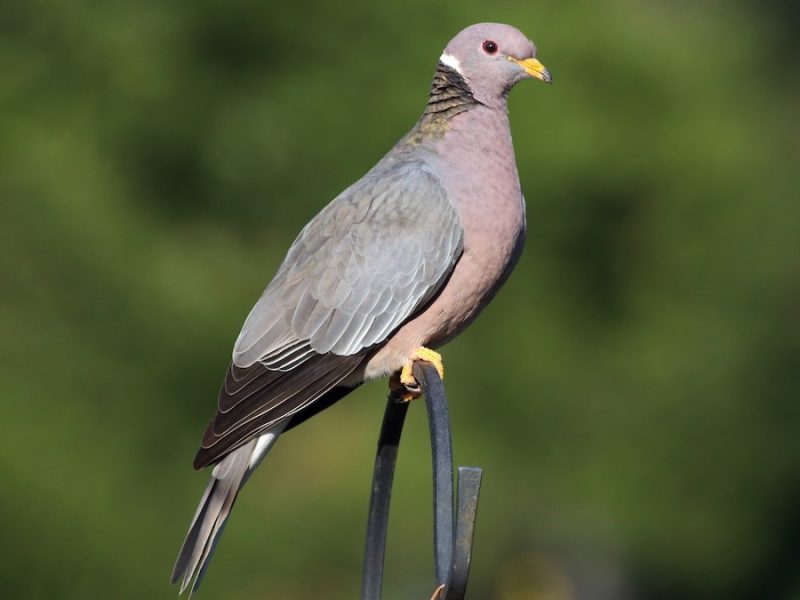
The Band-tailed Pigeon is Oregon’s largest native dove species, measuring around 14 to 16 inches in length with a broad wingspan and a long, square tail marked by a pale gray band. Its plumage is elegant—a soft bluish-gray body with a purplish head and breast, yellow bill with a black tip, and bright yellow legs. A distinctive white crescent adorns the back of the neck, bordered by iridescent green and violet feathers that shimmer in sunlight.
These pigeons are primarily forest dwellers, inhabiting mature coniferous and mixed woodlands, especially in the Coast Range, Cascade foothills, and southwestern Oregon. They feed on acorns, berries, seeds, and occasionally pine nuts. During summer, they may visit mineral springs or seeps to consume salt, a behavior unique among pigeons and doves in the region. Their diet shifts seasonally depending on fruit availability, and they often migrate altitudinally to follow food sources.
Their call is a deep, owl-like “hoo-hoo-hoo-hoo,” softer and more resonant than the Mourning Dove’s coo. Band-tailed Pigeons are shy and elusive, often seen flying high above treetops or perched quietly in forest canopies. They are strong fliers and can travel considerable distances between feeding and roosting areas.
In Oregon, they are most commonly found west of the Cascades during breeding season, especially in forested areas of the Willamette Valley and along the coast. Some populations migrate south to California and Mexico in winter, while others move to lower elevations where food remains available. Although still widespread, Band-tailed Pigeons are considered a species of concern due to habitat loss and reduced availability of key food sources.
White-winged Dove (Zenaida asiatica)
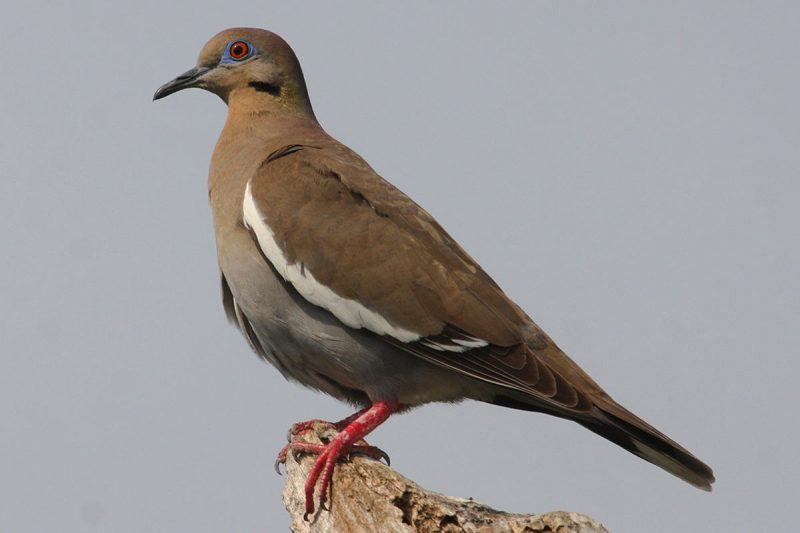
The White-winged Dove is a medium-sized dove recognized by its distinctive white-edged wings and a narrow blue ring of bare skin around its dark red eyes. Measuring about 11 inches long with a wingspan of up to 18 inches, this species has a grayish-brown body and a short, square tail tipped with white. When in flight, the bold white stripe across the wings is unmistakable and helps distinguish it from other doves in Oregon.
These doves primarily feed on seeds, grains, and fruits, especially those from desert plants such as saguaro cacti and mesquite in their southern range. When visiting Oregon, they adapt easily to available food sources, including wild berries and agricultural grains. They often forage on the ground but are also known to feed in trees and shrubs. White-winged Doves drink frequently and are capable of ingesting water without tilting their heads, similar to other dove species.
Their call is a rhythmic and somewhat mournful “who-cooks-for-you” hooting, often repeated several times. Males use this sound to establish territories and attract mates during the breeding season. The species is also known for its strong flight and long-distance migratory behavior, with individuals capable of covering vast distances across the southwestern U.S. and Mexico.
In Oregon, the White-winged Dove is considered a rare visitor, occasionally sighted during spring or late summer migrations. Most records come from the southern and eastern regions of the state, particularly near the Klamath Basin and high desert areas. These sightings typically involve solitary birds or small groups straying north from their usual range. As warmer climates continue to expand northward, it is possible that this species will become a more regular visitor in Oregon in the coming decades.
Common Ground Dove (Columbina passerina)
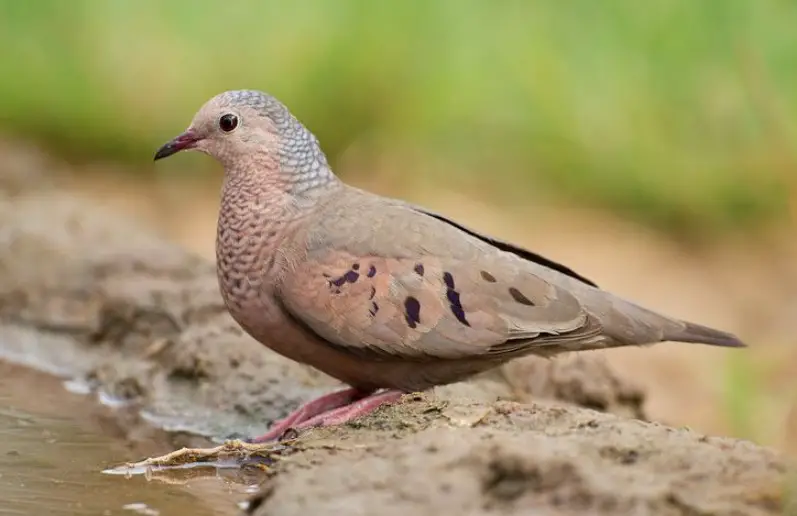
The Common Ground Dove is the smallest dove species in North America, measuring only about 6 to 7 inches long with a wingspan of 10 to 12 inches. Its compact body, short tail, and scaled appearance on the neck and breast make it easy to identify. The plumage is a mix of soft browns and grays, perfectly suited for blending into dry, sandy environments. When it flies, the chestnut-colored wing patches are briefly visible—a useful field mark for observers.
This dove prefers open habitats such as grasslands, scrublands, and desert edges. It spends most of its time walking on the ground, foraging for seeds, small fruits, and occasionally insects. Because of its small size and ground-dwelling habits, it is more likely to be spotted scurrying away than taking flight. Its short, whistling flight and quiet behavior make it easy to overlook, even where present.
The call of the Common Ground Dove is a soft, low “coo-oo,” repeated in a steady rhythm that resembles the distant hooting of an owl. It is less resonant than that of larger doves but can carry over short distances. Pairs often form long-term bonds, nesting close to the ground in low shrubs or grasses, and producing multiple broods each year in warmer climates.
In Oregon, the Common Ground Dove is a very rare accidental visitor, with only a handful of confirmed sightings in the far southern part of the state, especially near the California border. These rare appearances are typically attributed to birds wandering far outside their usual range in the southwestern United States. While not a resident species, the occasional sightings of this delicate dove add an exciting element to Oregon’s birdwatching records.
Stock Dove (Columba oenas)
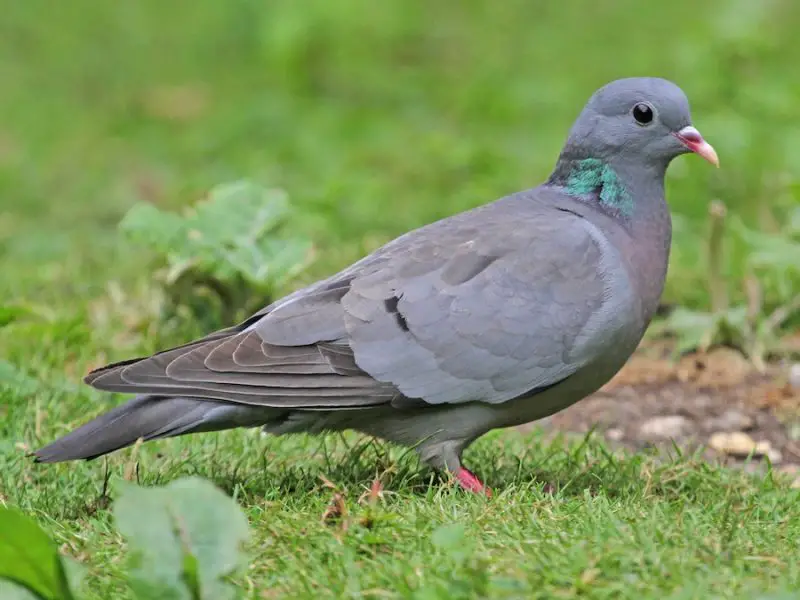
The Stock Dove is an uncommon and elusive visitor to Oregon, native to Europe and western Asia but occasionally appearing as a vagrant along the Pacific Coast. Slightly smaller than the Rock Pigeon, it measures about 11 to 13 inches in length and has a wingspan of approximately 24 inches. Its plumage is bluish-gray with a subtle pinkish hue on the chest and an iridescent green patch on the neck. Unlike the Rock Pigeon, it lacks the bold wing bars and has a cleaner, more uniform appearance.
Stock Doves favor open countryside, coastal cliffs, and wooded edges in their native range. They feed mostly on seeds and grains, foraging on the ground in small groups or pairs. When visiting Oregon, they are likely to be seen in agricultural fields or grassy meadows, often mixing with Rock Pigeons or Band-tailed Pigeons. Their flight is strong and direct, with rapid wingbeats similar to their close relatives.
Their call is a deep, rolling “oo-woo” or “whoo-uh,” more resonant than the Rock Pigeon’s cooing but softer in tone. During breeding, males perform display flights, circling above their territory before landing to call from a perch. Nesting typically occurs in tree cavities, cliffs, or old woodpecker holes—unusual among pigeons, which more commonly build open nests.
In Oregon, the Stock Dove is considered an extremely rare vagrant, with only a few recorded instances along the coast and in the Columbia River region. Most sightings are believed to be escapes from captivity, though a few may represent genuine trans-Atlantic vagrants aided by strong winds. These rare appearances are highly prized among birders, as the Stock Dove’s presence marks one of the most extraordinary examples of long-distance vagrancy in Oregon’s avian records.
Tips for Observing Doves in Oregon
Observing doves in Oregon offers birdwatchers a calm and rewarding experience, as these birds are gentle, abundant, and active in diverse habitats across the state. To make your birding sessions more productive, it helps to know when and where to look, as well as what behaviors to watch for.
Best Time to See Doves in Oregon
The best time to observe doves in Oregon is during spring and summer, particularly from April through August, when most species are nesting and displaying courtship behaviors. Mourning Doves begin singing their soft coos early in the morning, while Band-tailed Pigeons are more active during late afternoons. Eurasian Collared-Doves and Rock Pigeons can be seen year-round, though their activity peaks during mild weather. Rare species like the White-winged Dove and Common Ground Dove are usually recorded between May and September, coinciding with migration periods.
If you’re birdwatching during the colder months, focus on low-elevation areas where food remains abundant—such as agricultural valleys, urban parks, and rural grain fields. These spots often attract overwintering Mourning Doves and small flocks of Band-tailed Pigeons that have moved down from the mountains.
Best Places to See Doves in Oregon
Doves can be found in nearly every corner of Oregon, but certain regions are particularly rewarding for birdwatchers. The Willamette Valley is ideal for spotting Mourning Doves and Eurasian Collared-Doves year-round, especially near farmlands, orchards, and suburban gardens. Forest edges and foothills of the Coast Range and Cascades are prime habitats for Band-tailed Pigeons during summer months.
Urban areas like Portland, Eugene, and Salem host large populations of Rock Pigeons and Collared-Doves, which nest on buildings, bridges, and power lines. For rarer species, birders should check southern Oregon—particularly around Klamath Falls, Ashland, and the Rogue Valley, where White-winged Doves and Common Ground Doves are occasionally recorded. Coastal regions have also yielded a few sightings of the elusive Stock Dove, especially near Newport and the Columbia River estuary.
Birdwatching Tips
Patience and silence are key when observing doves. These birds are easily startled, especially the shyer Band-tailed and Mourning Doves. Early morning walks in quiet areas increase your chances of spotting feeding flocks on the ground. Bring binoculars with good clarity to observe subtle field marks—such as the black neck collar of the Eurasian Collared-Dove or the white tail edges of the Mourning Dove.
Consider setting up a bird feeder with millet, safflower, or cracked corn to attract doves to your yard. Providing a shallow water dish for drinking and bathing can also encourage regular visits. Keep in mind that naturalists often identify species by sound—so learning the differences between their coos and hoots can be just as rewarding as spotting them visually.
FAQs about Doves in Oregon
What is the most common dove in Oregon?
The Mourning Dove (Zenaida macroura) is the most widespread and abundant dove in Oregon. It is found across open fields, grasslands, farmlands, and suburban gardens, and can be seen throughout most of the year.
Are Eurasian Collared-Doves native to Oregon?
No. The Eurasian Collared-Dove is a non-native species that arrived in Oregon in the early 2000s. It has since spread rapidly and become one of the most commonly seen doves around urban and rural areas due to its adaptability.
Do doves migrate in Oregon?
Some species, such as the Mourning Dove and Band-tailed Pigeon, migrate seasonally. Mourning Doves often move southward in fall, while Band-tailed Pigeons migrate to lower elevations or into California and Mexico for the winter. Other species, like the Eurasian Collared-Dove and Rock Pigeon, remain year-round residents.
Where can I see Band-tailed Pigeons in Oregon?
Band-tailed Pigeons are most commonly found in western Oregon’s forested regions, especially along the Coast Range and Cascade foothills during summer. Look for them near oak groves, coniferous forests, or mineral springs, where they often gather in small flocks.
Are there any rare doves in Oregon?
Yes. The White-winged Dove, Common Ground Dove, and Stock Dove are rare visitors or accidental species in Oregon. Most sightings occur in the southern and coastal parts of the state, often during migration periods or after strong weather events.
What do doves eat in Oregon?
Doves primarily feed on seeds, grains, and fruits, often foraging on the ground in open areas. Mourning Doves and Eurasian Collared-Doves frequently visit backyard feeders, while Band-tailed Pigeons prefer wild berries and acorns in forested habitats.
How can I attract doves to my yard?
You can attract doves by offering seeds such as millet and cracked corn on platform feeders or the ground. Providing fresh water for drinking and bathing and maintaining low shrubs or trees for nesting can also help make your space dove-friendly. Avoid sudden movements and loud noises to keep these gentle birds comfortable.

